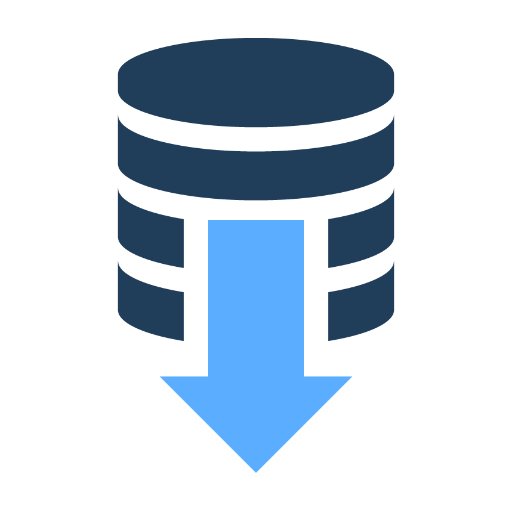Mock sample for your project: GraphHopper Directions API
Integrate with "GraphHopper Directions API" from graphhopper.com in no time with Mockoon's ready to use mock sample

GraphHopper Directions API
Version: 1.0.0
Speed up your application development by using "GraphHopper Directions API" ready-to-use mock sample. Mocking this API will help you accelerate your development lifecycles and allow you to stop relying on an external API to get the job done. No more API keys to provision, accesses to configure or unplanned downtime, just work.
Enhance your development infrastructure by mocking third party APIs during integrating testing.
Description
With the GraphHopper Directions API you can integrate A-to-B route planning, turn-by-turn navigation,
route optimization, isochrone calculations and other tools in your application.
The GraphHopper Directions API consists of the following RESTful web services:
Routing API,
Route Optimization API,
Isochrone API,
Map Matching API,
Matrix API,
Geocoding API and
Cluster API.
Explore our APIs
Get started
Sign up for GraphHopper
Create an API key
Each API part has its own documentation. Jump to the desired API part and learn about the API through the given examples and tutorials.
In addition, for each API there are specific sample requests that you can send via Insomnia or Postman to see what the requests and responses look like.
Insomnia
To explore our APIs with Insomnia, follow these steps:
Open Insomnia and Import our workspace.
Specify your API key in your workspace: Manage Environments -> "api_key": your API key
Start exploring
Insomnia
Postman
To explore our APIs with Postman, follow these steps:
Import our request collections as well as our environment file.
Specify your API key in your environment: "api_key": your API key
Start exploring
Postman
API Client Libraries
To speed up development and make coding easier, we offer the following client libraries:
JavaScript client - try the live examples
Others like C#, Ruby, PHP, Python, ... automatically created for the Route Optimization API
Bandwidth reduction
If you create your own client, make sure it supports http/2 and gzipped responses for best speed.
If you use the Matrix, the Route Optimization API or the Cluster API and want to solve large problems, we recommend you to reduce bandwidth
by compressing your POST request
and specifying the header as follows: Content-Encoding: gzip. This will also avoid the HTTP 413 error "Request Entity Too Large".
Contact Us
If you have problems or questions, please read the following information:
FAQ
Public forum
Contact us
GraphHopper Status Page
To stay informed about the latest developments, you can
follow us on twitter,
read our blog,
watch our documentation repository,
sign up for our newsletter or
our forum.
Select the channel you like the most.
Map Data and Routing Profiles
Currently, our main data source is OpenStreetMap. We also integrated other network data providers.
This chapter gives an overview about the options you have.
OpenStreetMap
Geographical Coverage
OpenStreetMap covers the whole world. If you want to see for yourself if we can provide data suitable for your region,
please visit GraphHopper Maps.
You can edit and modify OpenStreetMap data if you find that important information is missing, e.g. a weight limit for a bridge.
Here is a beginner's guide that shows how to add data. If you have edited data, we usually consider your data after 1 week at the latest.
Supported Vehicle Profiles
The Routing, Matrix and Route Optimization APIs support the following vehicle profiles:
Name | Description | Restrictions | Icon
-----------|:----------------------|:--------------------------|:---------------------------------------------------------
car | Car mode | car access | car image
small_truck| Small truck like a Mercedes Sprinter, Ford Transit or Iveco Daily | height=2.7m, width=2+0.4m, length=5.5m, weight=2080+1400 kg | small truck image
truck | Truck like a MAN or Mercedes-Benz Actros | height=3.7m, width=2.6+0.5m, length=12m, weight=13000 + 13000 kg, hgv=yes, 3 Axes | truck image
scooter | Moped mode | Fast inner city, often used for food delivery, is able to ignore certain bollards, maximum speed of roughly 50km/h | scooter image
foot | Pedestrian or walking without dangerous SAC-scales | foot access | foot image
hike | Pedestrian or walking with priority for more beautiful hiking tours and potentially a bit longer than foot. Walking duration is influenced by elevation differences. | foot access | hike image
bike | Trekking bike avoiding hills | bike access | bike image
mtb | Mountainbike | bike access | Mountainbike image
racingbike| Bike preferring roads | bike access | racingbike image
Please note:
all motor vehicles (car, smalltruck, truck and scooter) support turn restrictions via turncosts=true
the free package supports only the vehicle profiles car, bike or foot
up to 2 different vehicle profiles can be used in a single optimization request. The number of vehicles is unaffected and depends on your subscription.
we offer custom vehicle profiles with different properties, different speed profiles or different access options. To find out more about custom profiles, please contact us.
a sophisticated motorcycle profile is available up on request. It is powered by the Kurviger Routing API and favors curves and slopes while avoiding cities and highways.
TomTom
If you want to include traffic, you can purchase the TomTom Add-on.
This Add-on only uses TomTom's road network and historical traffic information.
Live traffic is not yet considered. If you are interested to learn how we consider traffic information, we recommend that you read this article.
Please note the following:
Currently we only offer this for our Route Optimization API.
In addition to our terms, you need to accept TomTom's End User License Aggreement.
We do not use TomTom's web services. We only use their data with our software.
Contact us for more details.
Geographical Coverage
We offer
Europe including Russia
North, Central and South America
Saudi Arabia
United Arab Emirates
South Africa
Australia
Supported Vehicle Profiles
Name | Description | Restrictions | Icon
-----------|:----------------------|:--------------------------|:---------------------------------------------------------
car | Car mode | car access | car image
small_truck| Small truck like a Mercedes Sprinter, Ford Transit or Iveco Daily | height=2.7m, width=2+0.4m, length=5.5m, weight=2080+1400 kg | small truck image
Other APIs in the same category

GeoDB Cities API
in your apps!
Filter cities by name prefix, country, location, time-zone, and even minimum population.
Sort cities by name, country code, elevation, and population - or any combination of these.
Get all country regions. Get all cities in a given region.
Display results in multiple languages. RESTful API adheres to industry best-practices, including
HATEOAS-style links to facilitate paging results.
Backed by cloud-based load-balanced infrastructure for resiliency and performance!
Data is periodically refreshed from GeoNames and WikiData.
Notes:
Since the database is periodically updated, this may very rarely result in certain cities
being marked deleted (e.g., duplicates removed). By default, endpoints returning city data will exclude
cities marked deleted. However, in the unlikely event that this occurs while your app is paging through a set
of affected results - and you care about the paged results suddenly changing underneath - specify
includeDeleted=SINCEYESTERDAY (or SINCELAST_WEEK if you're really paranoid!).
Useful Resources
SDKs
Angular,
Sample App
Java
JavaScript
Swagger Docs
Usage License
World Time API

LotaData

Quicksold REST API

Atmosphere API
API requests must contain a key "API-Key" in the header (see code samples). Obtain a key from here.
Help us improve the quality of our web APIs by completing our 2 minute survey here.
Amentum Pty Ltd is not responsible nor liable for any loss or damage of any sort incurred as a result of using the API.
Copyright Amentum Pty Ltd 2021.
Space Radiation API
Galactic Cosmic Rays from outside our solar system generated by
supernovae and other phenomena;
Solar Energetic Particles produced by the Sun during intense and
sporadic bursts of activity; and
Trapped Radiation: energetic particles confined by Earth's magnetic
field, usually comprising an inner belt of mostly high energy protons
and an outer belt dominated by lower energy electrons and plasma.
Understanding the space radiation environment for a particular mission profile is becoming increasingly important. Commercial off-the-shelf electronic components that aren't resilient to space radiation are now prevalent. Longer duration missions to cislunar space, Mars, and beyond are placing astronauts at greater risk of radiation exposure.
API requests must contain a key "API-Key" in the header (see code samples). Obtain a key from here.
Help us improve the quality of our web APIs by completing our 2 minute survey here.
Amentum Pty Ltd is not responsible nor liable for any loss or damage of any sort incurred as a result of using the API.
Copyright Amentum Pty Ltd 2021.

VA Facilities
This RESTful API provides information about physical VA facilities. Information available includes
geographic location, address, phone, hours of operation, and available services.
VA operates several different types of facilities, the types represented in this API include:
Health Facilities (vha)
Benefits Facilities (vba)
Cemeteries (nca)
Vet Centers (vc)
To read an FAQ on how wait times are calculated, click the "For more information" link on this page.
Getting Started
Base URLs
The base URLs for the VA Facilities API in the various environments are:
Sandbox: https://sandbox-api.va.gov/services/va_facilities/v0
Production: https://api.va.gov/services/va_facilities/v0
Authorization
API requests are authorized through a symmetric API token, provided in an HTTP header with name apikey.
Response Formats
Clients may request several response formats by setting the Accept header.
application/json - The default JSON response format complies with JSON API. This media type is not available for bulk requests using the /facilities/all endpoint. It will return 406 Not Acceptable.
application/geo+json - GeoJSON-compliant format, representing each facility as a feature with a point geometry.
application/vnd.geo+json - Deprecated. Prefer application/geo+json.
text/csv - Available for the bulk download operation only. Some structured fields are omitted from the CSV response.
Response Elements
Some data elements within the response are only present for facilities of a given type:
The patient satisfaction scores contained in the satisfaction element are only applicable
to VA health facilities.
The patient wait time values contained in the wait_times element are only applicable to
VA health facilities.
The list of available services in the services element is only applicable to VA health and
benefits facilities.
The operational hours special instructions contained in the operationalhoursspecial_instructions element is only applicable to VA health and Vet Center facilities.
Facility ID Formats and Constraints
A facility ID has the format prefix_stationNumber. The prefix is one of nca, vc, vba, or vha. Cemeteries may be national (VA) or non-national; non-national cemeteries have the station number prefixed with an s. There are no other constraints on the format. Examples:
Health: vha_402GA
Benefits: vba_539GB
National cemetery: nca_063
Non-national cemetery: nca_s1082
Vet center: vc_0872MVC
Mobile Facilities
The mobile health facilities move regularly within a region. If a facility comes back from this API with "mobile": "true", the latitude/longitude and address could be inaccurate. To get the exact current location, please call the number listed.
Deprecations
activestatus field is deprecated and replaced with operatingstatus.
application/vnd.geo+json media type is deprecated and replaced by application/geo+json
Reference
Raw VA Facilities Open API Spec
GeoJSON Format
JSON API Format

bng2latlong

Weatherbit.io - Swagger UI Weather API documentation

